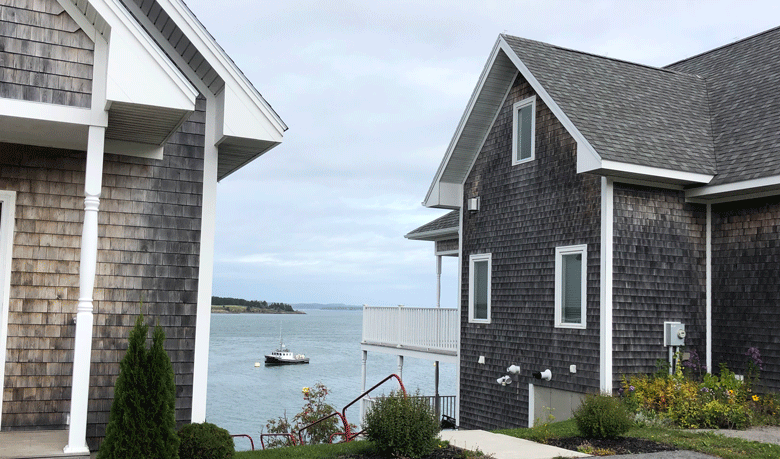
Lubec’s Safe Harbor project, which has been in the works for more than five years and recently stalled for lack of funding, has taken a significant step forward with an additional $10 million expected from the federal government, bringing project funding up to $29.6 million. It is now anticipated that the project will be completed in 2026.
Select Board Chairwoman Carol Dennison made the announcement during the board’s Feb. 1 meeting, when she outlined the results of her discussions with the Maine Department of Transportation and representatives of Sen. Susan Collins. Under a new agreement, DOT will take over management of the project through the department’s Aurele Gorneau. Gorneau was project manager for the Eastport breakwater restoration, as well as many other DOT projects.
Gorneau said the project will follow the design prepared by Lubec’s Safe Harbor Committee. According to DOT, the total project cost is pegged at $29.1 million. The additional funding, said Gorneau, is expected to be provided by the U.S. Department of Transportation’s Maritime Administration, or MARAD. The state’s role in the project will be to manage the work.
Area fishermen backed the project as it is intended to provide a refuge from damaging storms, some of which have led to loss of life.
Once funding details are settled, says Gorneau, new bids will be solicited. He expects construction work to begin late this year. Information received from the DOT shows the project to include construction of new breakwater, boat launch, parking lot, and wharf located behind the Lubec Historical Society building off Route 189.
The Safe Harbor project was first presented to Lubec voters during a special town meeting in September 2017, when approval was granted for the town to purchase a parcel of land needed for the initiative. Area fishermen backed the project as it is intended to provide a refuge from damaging storms, some of which have led to loss of life. Design details were worked out by an ad-hoc committee assigned the task, which provides for a space sheltered from the strong northern winds of Johnson Bay, as well as a ramp and parking area affording space to park trailerable craft during storms.
In September 2018 the town accepted a donation of $10,000 from the Butler Conservation Fund towards the project; at that time no cost estimates had been developed. In January of 2020 the federal government approved a grant of $19.65 million, and shortly after bids were solicited. The project then stalled when the two bids received were both above the funding amount. One reduced the scope unacceptably but stayed within the budget, while the other retained the scope but was priced well beyond available funding.
The Safe Harbor plan calls for constructing a breakwater extending several hundred feet into Johnson Bay, providing a sheltered area where mariners can launch, recover, and moor vessels during inclement weather. The project also would include a two-way road to the end of the pier, with two hoists for fishermen to get their product to market safely and quickly. Part of the plan includes providing the Maine Marine Patrol with dock space that would allow its boat to be available full-time, 12 months out of the year.
According to government statistics, commercial fishing is the most dangerous occupation in the U.S., well ahead of logging. Research performed by Trescott resident Julie Keene, the Safe Harbor committee chairwoman, indicates that four deaths could have been prevented had a breakwater such as the one envisioned been available. This does not include events that happen on boats at sea; the four were all lost while attempting to come ashore—typically in a skiff—during foul weather.
This story first appeared in The Quoddy Tides newspaper and is reprinted here with permission and gratitude.





